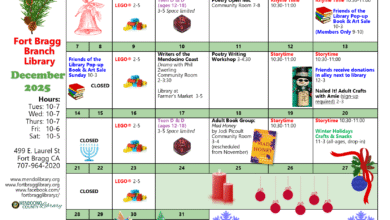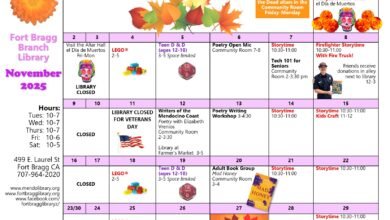NorCal Bats ~ Summer Reading Event
 How fun is this? An educational program featuring varieties of rescued Northern California bats, such as the Hoary Bat, the Western Red Bat, Canyon Bat and many more! Learn about their habitats, physical features, diets, behavior and average lifespans. Visit with volunteers trained in bat rescue techniques and rehabilitation and ask those burning questions about bats you’ve been curious about all your life! And you can do it all at your local library!
How fun is this? An educational program featuring varieties of rescued Northern California bats, such as the Hoary Bat, the Western Red Bat, Canyon Bat and many more! Learn about their habitats, physical features, diets, behavior and average lifespans. Visit with volunteers trained in bat rescue techniques and rehabilitation and ask those burning questions about bats you’ve been curious about all your life! And you can do it all at your local library!
Fort Bragg Library, July 28, 2017, 2 pm.
 NorCal Bats is dedicated to the rescue, rehabilitation and release of bats throughout Northern California. In addition, we are committed to public education regarding the environmental benefits of bats and dispelling fears and myths that lead to the death of roosts and colonies. Located in the Sacramento Valley, trained volunteers care for injured and orphaned bats throughout the valley and surrounding foothills.
NorCal Bats is dedicated to the rescue, rehabilitation and release of bats throughout Northern California. In addition, we are committed to public education regarding the environmental benefits of bats and dispelling fears and myths that lead to the death of roosts and colonies. Located in the Sacramento Valley, trained volunteers care for injured and orphaned bats throughout the valley and surrounding foothills.
Learn about these animals and their importance as insect control. Inform others and help protect our natural world. Dispel mis-perceptions and save these highly valuable mammals with education and rescue.
 Vampire Bats:
Vampire Bats:
“The sharp fangs, pointy devil ears and spooky black vampire wings are staples of Halloween, but the legend of the bloodthirsty bat drives the folks who study the winged creatures batty. Contrary to popular myth, there are no bats in California that suck blood, human or otherwise, said Scott Osborn, an environmental scientist with the California Department of Fish and Wildlife. The tiny, beady-eyed beasts are not blind, either. For that matter, they aren’t big spreaders of rabies and, get this, they aren’t even rodents. They belong to their own order of Chiroptera.”
Join us for more surprising and little known facts about California bats, July 28, 2017, 2 pm at Fort Bragg Library
How NorCal Bats rescues bats:
We receive calls from homeowners, veterinary offices, businesses and other wildlife rehabilitation groups. A volunteer retrieves the bat and the animal is evaluated. Photo
Orphaned bats are fed special formula and cared for around the clock until the bat is old enough to fly. It learns to eat insects then joins others in a flight cage to build up its strength. Once ready, it rejoins a wild colony.
Adults may need medication, repair to a broken bone, hydration or other types of care. We work closely with a veterinarian to provide proper treatment. The bat is taught to eat mealworms and given a chance to heal and recuperate. Once it is restored to a condition of good health, it is released to the wild.
If an animal cannot be released due to complications that would prevent its success in the wild, it is evaluated for suitability in our education program.
From their website www.norcalbats.org











